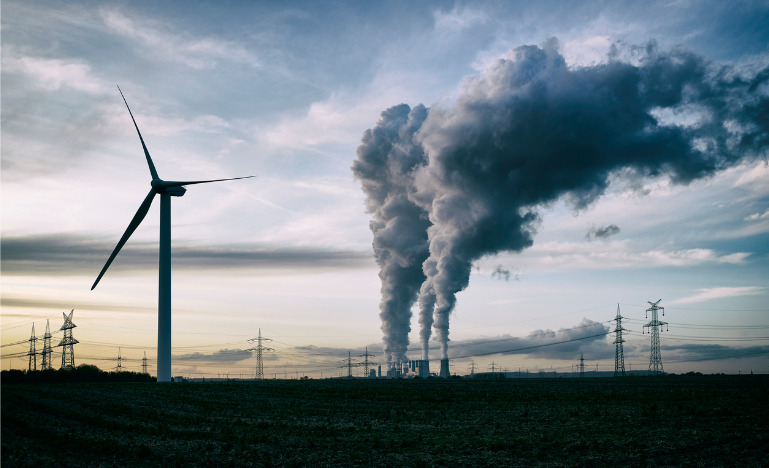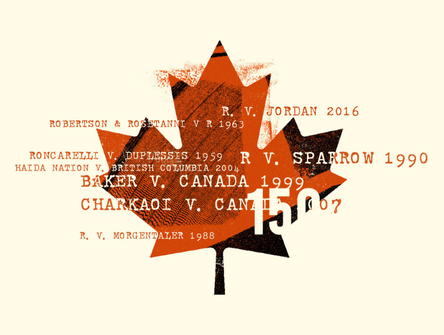Unless the levy breaks
The European Union is the first out of the gates with plans for a carbon border mechanism to fight climate change. Will the U.S. and Canada follow?

Unveiled as part of a package of 13 different climate policies this month, the European Union’s carbon border adjustment mechanism (CBAM) will see carbon-intensive goods, including cement, iron and steel, aluminium, fertilizers and electricity, taxed upon import into the Union.
It's part of the European Green Deal, which aims to reduce the bloc's carbon emissions by 55% compared to 1990 levels and become a climate-neutral continent by 2050.
It would also protect E.U. industries from competitors overseas who have less climate regulation to contend with, and to help reduce carbon leakage. By equalizing the price of carbon between domestic and imported products, the tariff helps ensure E.U. production doesn't relocate to jurisdictions with more lax regulations.
"It's by all accounts a pretty aggressive scheme, as it is dealing with the issues quite directly," says Martha Harrison, an international trade lawyer and partner at McCarthy Tétrault.
"I think we'll see in the next 12 to 24 months whether other countries take a more assertive position against this or if they start to consider opportunities to create their own CBAM system."
In Canada, that consideration is already underway. In its 2021 federal budget, the federal government said it would start consultations with key stakeholders and international partners on designing and implementing a CBAM.
Earlier this month at the G20, Finance Minister Chrystia Freeland discussed carbon border adjustments with Paolo Gentiloni, the European Commissioner for Economy. As the summit wrapped up, global finance ministers spoke of the need for closer international coordination on the use of carbon pricing mechanisms.
Mark Warner, a Canadian and American trade lawyer, thinks Prime Minister Justin Trudeau may be eager to do something with the E.U., and with the support of the Bloc and NDP, could get a CBAM passed through Parliament. The problem lies south of the border with Canada's largest trading partner. In April, Minister of Environment and Climate Change Jonathan Wilkinson told iPolitics that Canada would only adopt a border tariff if the U.S. does too.
Although the Biden administration is open to the idea, also gaining traction among Democrats in the Senate, the United States does not have a price on carbon. That makes the prospect of a tax challenging.
However, on July 19, Sen. Chris Coons of Delaware and Rep. Scott Peters of California proposed a new import tax for countries that fail to meet U.S. carbon emissions standards — something they hope to roll into the Democrats' $3.5 trillion reconciliation bill. That legislation is on shaky ground in Congress, and given the divide in the Senate and the slim majority in the House, any attempt to get a border tariff passed would likely find itself in a similar situation.
"Biden is a fairly weak president and his ability to act unilaterally is really constrained," Warner says. "He's got a very narrow window for action on something like this."
That said, in the wake of the E.U.'s announcement, U.S. climate envoy John Kerry says the U.S. is considering whether to follow suit.
"We've talked with France, Netherlands and the E.U. very closely," he told the Financial Times. "We've agreed to consult — we've not said we're supportive of definitely putting one into place. That's something I really want to talk to China and other countries about."
Harrison says close contact with the Americans is important. Ditto for other trading partners, particularly those we have free trade agreements with.
Warner says it would be hard for Canada to go it alone if the U.S. doesn't move ahead on this front.
"The Europeans have more scope to act unilaterally than we do. They're bigger and not as tied to the U.S. as we are," he says. "It's really hard to see how you could apply this to U.S. imports to Canada in a way that wouldn't lead to retaliation in the United States."
The good news is there is time. Warner doesn't expect the 27-member bloc to pass this any time soon.
"Nothing is easy in Europe. We saw that with Brexit. This will be difficult too. It's an aspirational thing that has to get through Parliament," he says. "So if I were sitting in in Ottawa advising the government, I'd say hang on. It's not happening tomorrow."
But if and when it does pass, the E.U. says it will implement it in a way that's consistent with the rules of the World Trade Organization. We'll see, says Harrison, as there are no proposals on the table for discounts or exceptions for least developed countries. In April, knowing what was coming down the pipe, China, South Africa, Brazil and India issued a joint statement expressing "grave concern" with what they deem to be a discriminatory tariff.
Harrison says it's virtually impossible to administer a CBAM system with no WTO risk, but challenging the E.U.'s border tariff might be a positive thing. It could be found discriminatory under trade rules, and yet get saved by GATT Article 20, the WTO’s general exceptions clause which covers some environmental measures.
"A challenge would cause the WTO to provide input on the legality of these measures and the types of rules and procedures that would fall within non-discriminatory treatment, or within the exception. That would inform how other countries could create CBAM systems," Harrison says.
All of which would be useful like-minded countries like the U.S., the U.K. and Canada who could be emboldened by the E.U.'s move and take steps to create mechanisms of their own.
"If the E.U. is able to impact other major economies to take similar measures, then I think it will represent an important turning point in how countries deal with climate change."


